- Top Employee Onboarding Software
- Why Use Employee Onboarding Software?
- Key Features of Effective Onboarding Software
- How To Choose The Right Onboarding Software?
- Which is the Best Onboarding Software?
- Frequently Asked Questions (FAQs)
- What Is Upskill And Reskill?
- Difference Between Reskilling And Upskilling
- Upskilling for Workplace Advancement
- Reskilling for Career Transformation
- Crafting Successful Upskill and Reskill Strategies
- Upskill And Reskill Strategizing: Things to Keep in Mind
- Measuring the Impact of Skill Development Initiatives
- Frequently Asked Questions
- What’s a Skill Gap?
- Employee Skill Gap Analysis: Why Do We Need It?
- How To Conduct Employee Skill Gap Analysis?
- Addressing Skill Gaps Through Training and Hiring
- Utilizing Skills Gap Analysis for Strategic Planning
- Leveraging Employee Skill Gap Analysis: Things To Keep In Mind
- Frequently Asked Questions
- Transformative Role of AI in Talent Acquisition
- Impact of AI on Business Recruiting
- Overcoming Challenges in AI-Driven Talent Acquisition
- Starting with AI in Talent Acquisition
- Future Landscape of AI in Talent Acquisition
- Frequently Asked Questions
- HR In The Hot Seat - Challenges With Evolving Workforce
- Mastering Effective HR Management: Tips For Overcoming Challenges
- Summing Up
- The Future of HR: Key Trends for 2024
- Skill-Based Hiring
- Prioritizing Employee Experience, Engagement & Well-being
- AI-Empowered Workforce Evolution and Its Impact
- Taking Diversity, Equity, and Inclusion Beyond Mandates
- Hybrid and Remote Work
- Embracing the Gig Economy and Blended Workforce
- Transparent HR Practices
- Climate Change Adaptation in HR Practices
- Leveraging HR Analytics for Data-Driven Decisions
- Continuous Learning & Development to Improve Productivity
- The Office Buzz in 2024
- Bottom Line - HR Operating Model Needs A Shift
- Importance and Impact of Recognizing Employee Birthdays
- Professional Birthday Wishes for Employees (All Experience Levels)
- Personalized Birthday Wishes for Employees in Different Roles
- Fun Birthday Wishes for Employees (with Templates)
- Birthday Wishes for Remote Employees
- Heartfelt Birthday Wishes for Employees
- Belated Birthday Wishes for Employees
- Simple & Sweet Birthday Wishes for Employees
- Celebrating Employee Birthdays: Ideas and Traditions
- Tips and Ideas for Sending Birthday Wishes to Employees
- Closing Thoughts
- Frequently Asked Questions
- What Is An Employee Referral?
- Benefits of Implementing Employee Referral Programs
- Setting Up an Effective Employee Referral Program
- Employee Referral Email
- Employee Referral Scheme
- Overcoming Challenges of Employee Referrals
- Companies with Best Employee Referral Programs
- Employee Referral Programs: Best Practices
- Closing Thoughts
- Frequently Asked Questions (FAQs)
- Importance of Team Building Activities
- Types of Team Building Activities
- Outdoor Team Building Activities for Employees
- Indoor Team Building Activities for Employees
- Easy Team Building Activities for Remote Employees
- Team Building Activities For New Employees (Icebreakers)
- Fun Team Building Activities for Different Goals
- To Boost Communication and Collaboration
- To Reduce Stress Levels and Promote Well-being
- Aligning Team Purpose and Values with Strategic Activities
- Final Remarks
- Frequently Asked Questions
- Importance of Employee Appreciation Quotes
- Work Appreciation Quotes for Employees
- Employee Appreciation Quotes for Hard Work Recognition
- Employee Appreciation Quotes for Teamwork and Collaboration
- Appreciation Quotes for Celebrating Employee Anniversaries and Milestones
- Employee Appreciation Quotes for Strong Work Ethics
- Employee Appreciation Quotes for Project & Goal Completion
- Employee Appreciation Quotes for Quality of Work
- Employee Appreciation Quotes for Creativity and Innovation
- Appreciation Quotes for Managers
- Peer-to-Peer Employee Appreciation Quotes
- Appreciation Quotes for Employees Leaving the Company
- Employee Appreciation Quotes for Thoughtful Gestures
- Funny Employee Appreciation Quotes
- Short Employee Appreciation Quotes
- Employee Appreciation Quotes for Different Roles
- Employee Appreciation Quotes for Senior Leadership
- Creative Ways to Use Employee Appreciation Quotes
- Summary
- Frequently Asked Questions (FAQs)
- What is Employee Satisfaction?
- Importance of Employee Satisfaction
- Objectives of Employee Satisfaction
- Employee Satisfaction vs. Employee Engagement
- Key Reasons for Employee Dissatisfaction
- Strategies for Improving Employee Satisfaction
- Ways to Measure Employee Satisfaction
- Best Practices for High Employee Satisfaction
- Final Remarks
- Frequently Asked Questions (FAQs)
- How to Craft Effective Employee Appraisal Comments
- Key Areas to Focus in Performance Review
- Comments On Hard Work & Dedication
- Assessing Interpersonal Skills
- Evaluating the Ability to Collaborate & Work in Teams
- Gauging Punctuality
- Commenting on Communication Style
- Reviewing Time Management and Productivity
- Leadership in Performance Appraisals
- Assessing Creativity & Innovation
- Evaluating Problem-Solving Abilities
- Recognizing Flexibility and Dependability in Reviews
- Employee Appraisal Comments for Different Roles
- Summary
- Frequently Asked Questions (FAQs)
- Employee Grievance Meaning
- Importance of Employee Grievance Process
- Types of Workplace Grievances
- Reasons for Employee Grievances
- Employee Grievance Procedure
- Steps in the Employee Grievance Handling Process
- Employee Grievance Form Example
- Final Remarks
- Frequently Asked Questions (FAQs)
- What is Company Culture?
- Importance of Company Culture
- Types of Company Culture
- Factors Contributing to Organizational Culture
- Assessing & Developing Corporate Culture
- Company Culture - It’s not just Perks or Feels
- Good Company Culture Examples
- Developing Company Culture: Best Practices
- Closing Thoughts
- Frequently Asked Questions (FAQs)
- What is Employee Empowerment?
- Benefits of Empowering Employees
- Employee Empowerment vs. Micromanagement
- Strategies for Effective Employee Empowerment
- Role of Managers in Fostering Empowerment
- Organizational Structure Supporting Empowerment
- Overcoming Barriers to Employee Empowerment
- Frequently Asked Questions (FAQs)
- What is Employer Branding?
- Importance of Employer Branding Strategy
- How to Build an Employer Branding Strategy?
- Strategies for Building a Strong Employer Brand
- How to Measure and Boost Your Employer Branding Success?
- Examples of Strong Employer Brand Strategy
- Best Practices for an Effective Employer Branding Strategy
- Closing Thoughts
- Frequently Asked Questions (FAQs)
- What are Employee Wellness Programs?
- Importance of Employee Wellness Programs
- Examples of Employee Wellness Programs
- Real-Life Examples of Corporate Wellness Programs
- Strategies for Encouraging Participation
- Supporting Diverse Employee Needs
- Creating Comprehensive Wellness Programs
- Measuring the Impact on Business and Employees
- Closing Thoughts
- Frequently Asked Questions (FAQs)
- What is Talent Management?
- Developing a Winning Talent Management Strategy
- Models and Frameworks
- Tips for Framing Effective Talent Management Strategy
- Looking Ahead: Recent Trends in Talent Management
- Frequently Asked Questions
- Role of AI in HR: Addressing Common Challenges
- Artificial Intelligence in HR Processes
- AI Tools for HR Functions
- How to Adopt AI in HR?
- Addressing Challenges of AI in HR
- Ethical and Responsible AI Use
- The Future of AI in HR
- Closing Thoughts
- Frequently Asked Questions
- What is Performance Management?
- Elements of Effective Performance Management
- Performance Management Cycle
- Differentiating Performance Management
- Benefits of Performance Management With Examples
- Challenges faced in Performance Management and their Solutions
- Future Trends in Performance Management
- Frequently Asked Questions
- Changing Role of HRM
- Changing Role Of HR Manager
- Technology and the Changing Role of HRM
- The Rise of AI and Machine Learning in HR
- Mobile Technology's Impact on HR Practices
- The Significance of People Analytics in HR
- Navigating the Future of HR Technology
- Final Remarks
- Frequently Asked Questions
- Compensation Management Meaning
- Compensation Types
- Breaking Down The Compensation Management Process
- HR Software for Compensation Management
- Current Trends in Compensation Management
- Frequently Asked Questions
- Defining Flexible Work Arrangements
- Flexible Working: Advantages for Businesses
- Challenges of Flexible Work Arrangements
- Crafting Flexible Working Practices
- Types Of Flexible Work Arrangements
- Comparing Flexible Work Arrangements
- Real-Life Examples of Flexible Work Arrangements
- Final Remarks
- Frequently Asked Questions
- Conflict Resolution Meaning
- Conflict Origins
- Tried & Tested Conflict Resolution Strategies
- Methods of Conflict Management at Workplaces
- Conflict Resolution Strategies: Top Management Tips
- Summary
- Frequently Asked Questions
- Career Development Meaning
- Career Development Plan for Employees
- Career Development in HRM: Growth Ideas For Employees
- Issues in Career Development and Their Solutions
- Closing Thoughts
- Frequently Asked Questions
- Understanding Compensation
- Exploring Benefits
- Difference between Compensation and Benefits
- Compensation & Benefits Structure
- Final Remarks
- Frequently Asked Questions
- Defining Recruitment in HR Practices
- Exploring Talent Acquisition in HR
- Understanding Talent Acquisition vs Recruitment
- When to Recruit or Acquire Talent
- Talent Acquisition vs Recruitment: Responsibilities
- From Recruitment To Talent Acquisition
- Closing Thoughts
- Frequently Asked Questions
- Work Culture Meaning
- Types of Work Cultures
- Components of Culture
- Best Work Culture Examples Set By Top Companies
- Creating a Positive Work Culture
- Closing Thoughts
- Frequently Asked Questions
- Defining Learning vs Development
- Importance of Learning and Development
- L&D Activities for Employees
- Choosing the Right L&D Activities
- Crafting an Effective L&D Strategies
- Aligning L&D Strategy with Business Goals
- Designing Engaging Learning Journeys
- Learning and Development Process: KPIs
- ROI in Learning and Development
- Emerging Trends in L&D
- Closing Thoughts
- Frequently Asked Questions
- What Is Leadership Development?
- Key Skills for Leaders
- How To Develop Leadership Skills in Organizations?
- What Is A Leadership Development Program?
- How To Develop A Leadership Development Program?
- Example of A Leadership Development Plan
- Benefits of Leadership Development Training
- Frequently Asked Questions
- Defining Diversity Training
- Importance of Diversity Training
- What are the Types of Diversity?
- Types of Diversity Training Methods
- Diversity Training Activities
- Choosing A Diversity Training Program
- How to Implement Diversity Initiatives
- Best Diversity Training Programs (Real-Life Examples)
- Improving the Effectiveness of Diversity Training
- Tracking and Evaluating the Results of DE&I Training Efforts
- Essential Elements for Successful Diversity Training
- Closing Thoughts
- Frequently Asked Questions
- Defining Occupational Health & Safety
- Evolution of Workplace Health and Safety
- Identifying Common Workplace Hazards
- Global Impact on Occupational Health & Safety
- Managing Employee Health and Safety Risks
- Occupational Health and Safety Problems
- Future of Occupational Health and Safety
- Frequently Asked Questions
- Employee Orientation Defined
- Employee Onboarding Explained
- Orientation and Onboarding: Understanding the Difference
- Importance of Orientation and Onboarding
- Crafting Comprehensive Integration Strategies
- Quick Tips for Orientation and Onboarding
- Frequently Asked Questions
- What is HR Metrics?
- Importance of HR Metrics
- HR Metrics Examples in Recruitment
- HR Metrics Examples in Employee Retention
- HR Metrics Examples in Revenue
- Other Common HR Metrics
- Soft HR Metrics Example
- HR Metrics Formula
- Utilizing HR Metrics Effectively
- Future of HR Metrics
- Summary
- Frequently Asked Questions
- Defining Decision Making Process
- Key Concepts In Decision Making
- Decision Making & Problem Solving
- Tips For Improving Decision Making Skills
- Selected Practice Questions & Answers
- Conclusion
- Frequently Asked Questions (FAQs)
- A case(s) of miscommunication
- The devil is in the (resume) details
- One for the complaints!
- What is an Exit Interview?
- Benefits of Exit Interviews to an Organization
- How to Conduct Exit Interviews?
- Exit Interview: Sample Questions to Ask
- Overcoming Challenges of Exit Interviews
- Exit Interviews: Best Practices
- Closing Thoughts
- Frequently Asked Questions
- Technology in the Workplace
- Benefits of Tech Integration
- Technology in the Workplace: Key Functions
- How Technology Normalized Remote Work
- Workplace Technology: Top Tools and Software
- Steps for Effective Technology Implementation
- Overcoming Tech Implementation Challenges
- Ethical Considerations in Tech Use
- Keeping Pace with Tech Trends
- Closing Thoughts
- Frequently Asked Questions
- What is Ethical Leadership?
- Principles of Ethical Leadership
- Difference between Ethics and Integrity
- Importance of Ethical Leadership
- Ethical Leadership in Practice
- Overcoming Challenges
- Frequently Asked Questions
- Embracing Change Management
- Mastering People Analytics
- Enhancing Stakeholder Relationships
- Navigating Diversity, Equity & Inclusion
- Upholding Ethics and Data Privacy
- Developing Critical Thinking
- Advancing Negotiation Techniques
- Fostering Inter-departmental Collaboration
- Building Resilience in HR
- Frequently Asked Questions
- What is Mental Health?
- Benefits of a Mentally Healthy Workforce
- Prioritising Mental Health: Creating a Culture of Support
- Final Remarks
- Frequently Asked Questions
- Gen Z vs Millennials - What is the difference?
- Retain and Engage Gen Z Employees: Need and Strategies
- Strategies to Retain and Engage Gen Z Employees
- Rethinking Requirements
- Final Remarks
- Frequently Asked Questions
- Understanding Millennial Leadership Needs
- Key Leadership Skills for Millennials
- How To Develop Millennial Into Leaders
- Additional Strategies to Develop Leaders
- Learning Preferences of Millennials
- Benefits of Investing in Millennial Leaders
- Closing Thoughts
- Frequently Asked Questions
- Understanding Fluff
- Examples of Interview Fluff
- Identifying Interview Fluff
- Addressing Interview Fluff
- Seeing Through the Fluff
- Frequently Asked Questions
- What is the Gender Pay Gap?
- Is the Gender Pay Gap Real?
- Factors Affecting the Gender Pay Gap
- How Age Impacts Women’s Earnings
- The ‘Motherhood Penalty’
- Education's Role in Wage Differences
- Racial and Ethnic Disparities in Pay
- Closing the Gender Gap
- Frequently Asked Questions
- Top Weirdest Late-To-The-Office Excuses
- The Fine Art of Balancing Wit and Wisdom in HR
- Understanding Social Media Recruiting
- Crafting Your Social Media Recruitment Strategy
- Implementing Your Strategy Effectively
- Popular Platforms for Recruitment
- Navigating the Downsides of Social Media Recruiting
- Measuring Success and Adjusting Strategy
- Summary
- Frequently Asked Questions
- Who Is A High Potential (HIPO) Employee?
- Characteristics of A High Potential (HIPO) Employee
- High Potential Employee Identification
- Grooming High Potential Employees
- Why High Potential Employees Leave
- How Do You Retain High Potential Employees?
- High Potential Employee Development: Best Practices
- Closing Thoughts
- Frequently Asked Questions
- What is Digital Fluency?
- Why Digital Fluency Matters?
- Difference between Digital Literacy and Digital Fluency
- Key Components of Digital Fluency
- Achieving Digital Fluency
- Overcoming Challenges
- Future of Workforce Digital Fluency
- Frequently Asked Questions
- What is Loud Quitting?
- Pros and Cons of Loud Quitting
- Reasons Behind the Trend
- Analyzing the Impact
- How HR Can Navigate the Loud Quitting Uproar
- Preventive Strategies
- Closing Thoughts
- Frequently Asked Questions
- Defining Emotional Intelligence in HR
- Why Emotional Intelligence Matters for HR Leaders
- How To Build Emotional Intelligence in HR
- Integrating EQ into HR Practices
- Impact of EQ on Company Culture
- Emotional Intelligence in HR: Major Challenges
- Final Remarks
- Frequently Asked Questions
- Understanding Internal Job Posting
- Internal Job Posting: Pros and Cons
- The Internal Job Posting Process
- Writing Effective Ads for Internal Job Posting
- Strategies for Success of Internal Job Posting
- Summary
- Frequently Asked Questions
- Understanding Workplace Bias
- Common Types of Bias in HR
- Closing Thoughts
- Frequently Asked Questions
- What is a Dry Promotion?
- Dry Promotion: Pros and Cons for Companies
- Impact of Dry Promotion on Employee Retention
- Preventing Talent Loss After Dry Promotions
- Closing Thoughts
- Frequently Asked Questions
- What Is A Stay Interview?
- Importance Of Stay Interviews
- Benefits And Challenges Of Stay Interviews
- Planning And Conducting Stay Interviews
- Stay Interviews: 20 Sample Questions To Ask
- Best Practices For Effective Stay Interviews
- Summary
- Frequently Asked Questions
- Who Is A Boomerang Employee?
- Reasons For Returning
- Benefits Of Hiring Boomerang Employees
- Challenges Of Rehiring
- Interviewing Boomerang Candidates: Sample Questions
- Enhancing The Hiring Process
- Making Informed Decisions
- Final Remarks
- Frequently Asked Questions
- Talent Pipeline Meaning
- Significance of Talent Pipelines
- Advantages of a Talent Pipeline
- Building a Talent Pipeline
- Maintaining a Talent Pipeline
- Attracting Top Talent
- Implementing the Strategy
- Frequently Asked Questions
- What is Micromanagement?
- Recognizing Micromanagement
- Leadership versus Micromanagement
- Keeping Micromanagement in Check
- Beyond Micromanagement
- Summing Up
- Frequently Asked Questions
- Recognizing Signs Of A Bad Hire
- Understanding The Impact On Teams
- Dealing With A Bad Hire
- Preventing Future Bad Hires
- Closing Thoughts
- Frequently Asked Questions
- Defining Neurodiversity
- Importance of Neurodiversity in the Workplace
- Moving Towards Inclusive Environments
- Final Remarks
- Frequently Asked Questions
- Understanding the Generation Gap
- Multigenerational Workforce: Debunking Stereotypes
- Strategies for Bridging the Gap
- Benefits of a Multigenerational Workforce
- Final Remarks
- Frequently Asked Questions
- Defining Productivity Theatre: All Show, No Go
- 5 Key Drivers of Fake Productivity
- Solutions to Combat Productivity Theatre
- Summary
- Frequently Asked Questions
- Defining Grumpy Staying
- Why do Grumpy Stayers not Leave?
- Recognizing the Signs
- Exploring the Causes
- Understanding the Impact
- Addressing the Issue
- Taking Action: Addressing Grumpiness with Empathy
- After the Conversation
- When Grumpy Staying Continues
- Closing Thoughts
- Frequently Asked Questions
- The Rationale Behind Office Peacocking
- Impact on Company Culture
- Impact on Employees
- Case Studies: Examples of Office Peacocking
- The Downside: Potential Pitfalls of Office Peacocking
- Practical Tips for Implementing Office Peacocking
- Frequently Asked Questions
- 13 Common Mistakes Young Managers Make
- Strategies To Avoid Mistakes (Individual Growth)
- How Young Managers Can Boost Teamwork
- Learning From Errors
- Summary
- Frequently Asked Questions
- Understanding Great Regret - What causes the shift shock?
- Impact of Great Regret
- How can HR help make the situation better?
- Closing Thoughts
- Frequently Asked Questions
- Understanding the HR Budget
- Key Components of an HR Budget
- Preparing an HR Budget Step-by-Step
- Importance of HR Budgeting in Management
- Final Remarks
- Frequently Asked Questions
- What are Pre-Employment Assessments?
- Importance of Pre-Employment Testing
- Types of Pre-Employment Assessments
- 15 Tips for Creating Effective Pre-Employment Assessments
- Closing Thoughts
- Frequently Asked Questions
- Exploring the Productivity Paradox
- Understanding the Impact of Solow Paradox
- Productivity Paradox: Why it Matters for Recruiters & HRs
- Identifying Causes and Challenges
- Strategies for Enhancing Productivity
- AI & the Modern-Day Productivity Paradox
- Beyond Technology: Building a Productive Workforce
- Summary
- Frequently Asked Questions
- Understanding the Great Reshuffle 2.0
- Preparing Leaders for the Change
- HR’s Role in Handling Great Reshuffling 2.0
- The Way Ahead
- Frequently Asked Questions
- Definition Of Managerial Grid
- Managerial Grid Theory Explained
- Application Of Managerial Grid
- Criticisms And Limitations
- Evolution And Contemporary Perspectives
- Integrating Managerial Grid With Other Models
- Practical Steps For Implementing Managerial Grid
- Conclusion
- Frequently Asked Questions
- Understanding Skills Taxonomy
- Why do we Need Skills Taxonomy?
- Benefits of Skills Taxonomy
- Components of Skills Taxonomy
- Building a Skills Taxonomy: A Step-by-Step Guide
- Skill Taxonomies vs Intelligence Tools
- Closing Thoughts
- Frequently Asked Questions
- Definition Of Team Building
- Stages Of Team Development
- Top 10 Strategies For Effective Team Building
- Team Building Activities
- Best Practices For Effective Team Building
- Setting Team Building Objectives
- Challenges In Team Building
- Conclusion
- Frequently Asked Questions (FAQs)
- Defining Job Shadowing
- Unpacking the Benefits
- Setting Up the Experience
- Job Shadowing vs Internship
- Dos and Don'ts for HR Professionals
- Closing Thoughts
- Frequently Asked Questions
- Employee Journey Mapping: Meaning & Importance
- Stages of the Employee Journey
- Steps for Effective Mapping
- Employee Journey Map: Where does it begin?
- Employee Journey Map: Template
- Best Practices & Tips
- Summary
- Frequently Asked Questions
- Why are Performance Appraisals needed?
- Evolution of Performance Management
- Modern Performance Practices
- Benefits of Modern Performance Appraisals
- The Future
- Frequently Asked Questions
- Is Experience the Sole Indicator of Success?
- Why Hire Inexperienced Talent?: Key Advantages
- Skills to Look For in Inexperienced Talent
- Challenges and Considerations in Hiring Inexperienced Talent
- Final Remarks
- Frequently Asked Questions
- What is a Company Retreat?
- Company Retreat Ideas: Team-Building & Exploration
- Relaxation and Celebration
- Planning Your Retreat: Things to Keep in Mind
- Closing Thoughts
- Frequently Asked Questions
- Understanding HR Forecasting
- HR Forecasting Key Concepts
- Steps for Implementing HR Forecasting
- Common HR Forecasting Methods
- Closing Thoughts
- Frequently Asked Questions
- What is ESG?
- HR and ESG - Why Care?
- ESG in HR Strategy
- Challenges for HR
- Future of ESG in HR
- Frequently Asked Questions
- Defining the Great Betrayal
- Reasons for Its Spread
- Impact on Workers
- Impact on Corporations
- Rebuilding Trust & Valuing Employees
- Closing Thoughts
- Frequently Asked Questions
- Importance of Clear Expectations
- Setting Expectations Early
- Communicating Expectations Effectively
- Differentiating Expectations
- Reviewing and Adjusting Expectations
- Summing Up
- Frequently Asked Questions
- Understanding KRA Frameworks And Models
- KRAs vs KPAs and KPIs
- Monitoring and Tracking KRAs
- KRAs in Various Roles
- Impact of KRA Frameworks and Models on Organizational Success
- Frequently Asked Questions
- Where: The Place of Work
- When: The Time of Work
- How Much Work: Alternate Employment Models
- Who Does the Work: Intelligence
- Designing Organizations with the Four Dimensions of Work
- Summing Up
- Simplifying Processes: The Foundation of Efficiency
- Reducing Unnecessary Meetings: Reclaiming Valuable Time
- Building Strong Accountabilities: Ensuring Responsibility
- Role of HR in Addressing Inefficiencies
- Continuous Improvement: A Commitment to Excellence
- Leadership's Role in Driving Efficiency
- Conclusion: A Holistic Approach to Efficiency
- Understanding Financial Freedom
- Benefits of Empowering Employees Financially
- Empowering Employees Through Financial Literacy
- Financial Topics That Need Attention Based On Career Stage
- Summing Up
- Frequently Asked Questions
- Defining Employee Voice
- Benefits of Amplifying Employee Voice
- Strategies and Tools
- Encouraging Participation
- Closing Thoughts
- Frequently Asked Questions
- Appraisal Blues: Signs of Unhappy Employees
- Addressing Unhappiness Post-Appraisal
- Non-Monetary Solutions for Dissatisfied Employees
- Summing Up
- Frequently Asked Questions
- Women in the Middle Eastern Workforce
- Importance of DEIB
- Role of HR in Building Inclusive Workplaces for Women
- Measuring Inclusion Progress: Key Metrics
- Closing Thoughts
- Frequently Asked Questions
- Preparing for the Conversation
- Conducting the Conversation
- Best Practices for the Talk
- After the Conversation
- Helping Employees Grow
- Frequently Asked Questions
- Understanding HR Exhaustion
- Factors Leading To HR burnout
- Impact Of HR Burnout
- Strategies To Prevent And Manage HR Burnout
- Role Of Technology In Preventing Burnout
- Celebrating HR Successes
- Summary
- Frequently Asked Questions
- Common Mistakes When Hiring Young Talent
- Building Connections with Candidates
- Summary
- Frequently Asked Questions
- Walking a mile in the employee’s shoes
- Conducting Humane Layoffs
- Remote Layoffs Management
- Supporting Laid-off Workers
- Managing the Aftermath
- Wrapping Up
- Frequently Asked Questions
- Importance of Shortening Time-to-Hire
- Shortening Hiring Time: Pre-Application Stage
- Reducing Hiring Time: Application Stage
- Hacks to Shorten Hiring Time: Interview Stage
- Reducing Hiring Time: Offer Stage
- 5 Other Important Hacks & Strategies
- Final Remarks
- Frequently Asked Questions
Diversity Training: Types & Top 10 Exercises (With Examples)
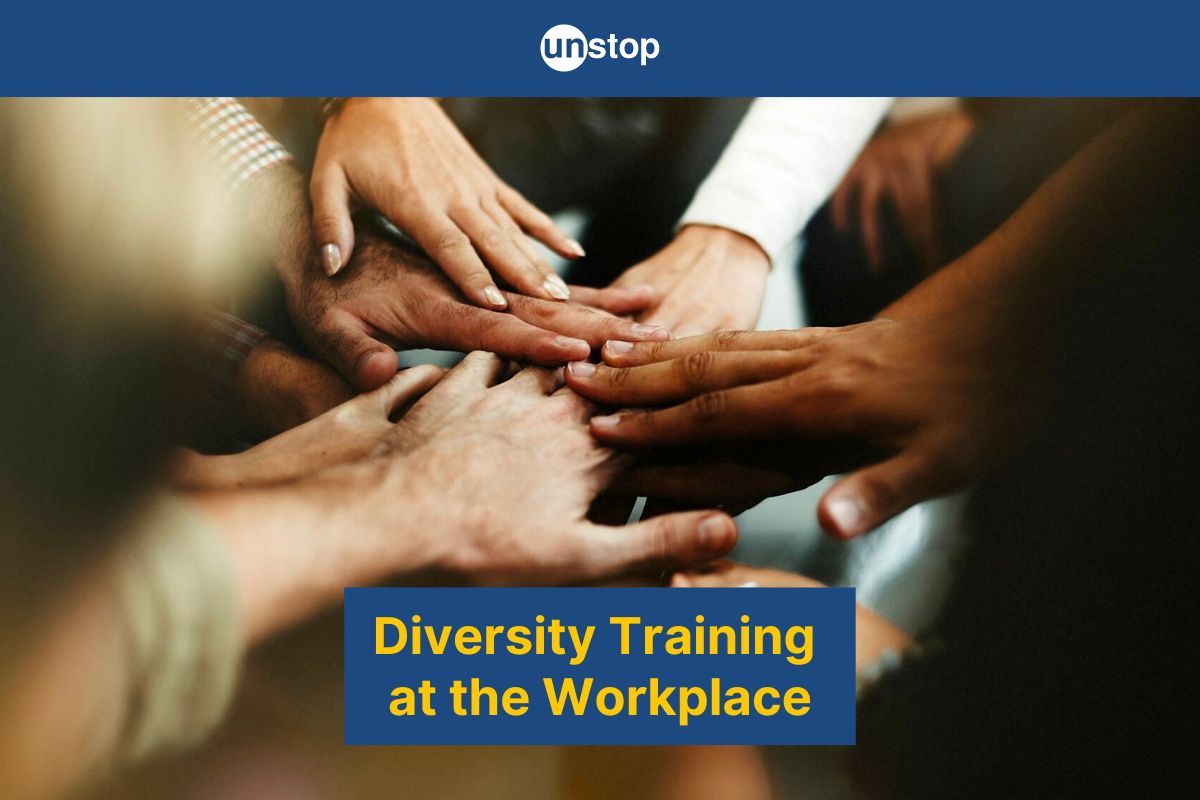
In today's dynamic business landscape, diversity training has become a non-negotiable component of success. By fostering an inclusive environment, organizations can unlock innovation, improve employee morale, and enhance productivity.
Diversity training goes beyond compliance - it cultivates empathy, understanding, and respect among team members, leading to a more harmonious workplace. Discover how embracing diversity can propel your organization to excellence.
Defining Diversity Training
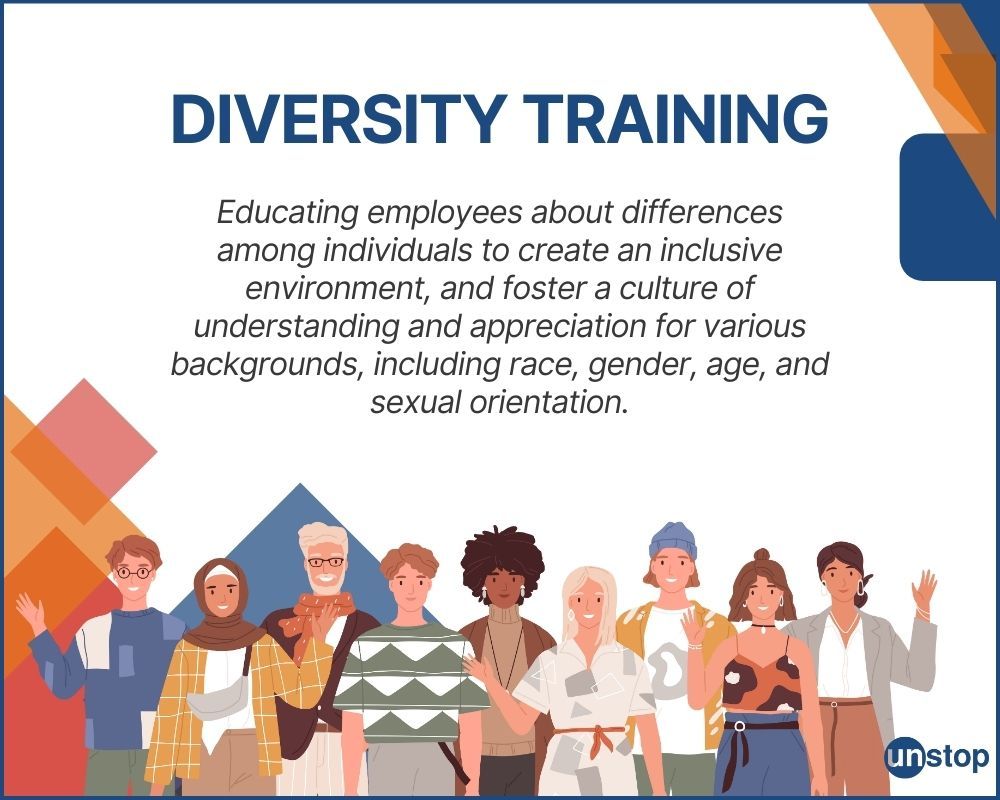
Diversity training in the workplace focuses on educating employees about differences among individuals. It aims to create an inclusive environment where diverse perspectives are valued and respected. This training helps foster a culture of understanding and appreciation for various backgrounds, including race, gender, age, and sexual orientation.
Goals and Objectives
The primary goal of diversity training programs is to promote equality and reduce discrimination within the workplace. By raising awareness about biases and stereotypes, these programs encourage employees to embrace diversity and treat each other with respect. The objectives include enhancing teamwork, improving communication, and increasing overall employee satisfaction.
Forms and Approaches
Diversity training can take various forms, such as workshops, seminars, online courses, or interactive activities. Companies may choose to implement mandatory training sessions for all employees or offer voluntary programs for those interested in learning more about diversity. Some organizations opt for immersive experiences like role-playing scenarios, simulations, or real-life case studies to deepen understanding.
Importance of Diversity Training
One significant impact of diversity training is its ability to reduce discrimination and bias in the workplace. Through education on unconscious biases and stereotypes, employees become more aware of their preconceptions. This awareness helps in fostering a culture of respect and equality among team members.
When employees are trained to appreciate diverse perspectives and experiences, it leads to a more collaborative and harmonious workplace. This inclusive environment allows individuals from all backgrounds to thrive and contribute effectively to the organization's success.
What are the Types of Diversity?
Diversity can manifest in various forms, including but not limited to demographic diversity, cognitive diversity, and experiential diversity.
- Demographic diversity encompasses differences in age, gender, race, ethnicity, sexual orientation, and physical abilities.
- Cognitive diversity refers to variations in perspectives, problem-solving approaches, and thinking styles among individuals.
- Experiential diversity involves differences in life experiences, backgrounds, and cultural influences that shape an individual's worldview.
Embracing and valuing these diverse dimensions can lead to enhanced creativity, innovation, and overall organizational performance.
Types of Diversity Training Methods

Here's a breakdown of some common types of diversity training categorized by their focus:
Awareness Building
This type of training lays the groundwork for understanding diversity and inclusion (DE&I). It focuses on educating employees on core concepts like:
- Different types of diversity (race, ethnicity, gender, sexual orientation, age, religion, disability etc.)
- Unconscious bias and its impact on decision-making
- The importance of creating a respectful and inclusive work environment
Common methods:
- Workshops and presentations by DE&I experts
- Diversity & Inclusion discussions
- E-learning modules
Skill Development
This training goes beyond awareness and equips employees with practical skills to navigate a diverse workplace effectively. It focuses on developing skills like:
- Avoiding microaggressions and fostering respectful dialogue.
- Empowering employees to intervene in situations of bias or discrimination.
- Understanding different cultural backgrounds and perspectives to enhance collaboration.
Common methods:
- Inclusive communication training
- Bystander intervention training
- Cultural competency training
- Role-playing simulations (providing a safe space to practice applying DE&I principles)
Behavioral Change
This type of training aims to create lasting change in workplace behavior by promoting inclusive practices. It focuses on strategies like:
- Fostering a culture of belonging and community
- Providing equal opportunities for advancement for all employees
- Holding leaders accountable for creating an inclusive environment
Common methods:
- Mentorship and sponsorship programs: Pairing underrepresented employees with mentors/sponsors)
- Employee Resource Groups (ERGs): Supporting employee-led groups based on shared identities or backgrounds
- Metrics and accountability: Tracking progress on DE&I goals and holding leaders responsible
Remember, DE&I training is a continuous process. It requires ongoing commitment from leadership and a sustained effort to create a workplace where all employees feel empowered.
Diversity Training Activities
Interactive Workshops
Interactive workshops are engaging sessions that encourage active participation and open dialogue among employees. These workshops often include role-playing exercises and group discussions to enhance understanding.
Online Modules
Online modules offer flexibility for employees to complete diversity training at their own pace. These modules typically consist of videos, quizzes, and interactive activities to reinforce learning.
Guest Speaker Sessions
Guest speaker sessions bring in external experts to share their experiences and insights on diversity. This method provides a fresh perspective and allows employees to engage with real-world examples.
Cultural Competency Training
Cultural competency training focuses on developing an understanding of different cultures, traditions, and customs. This type of training helps employees become more sensitive and respectful towards diverse backgrounds.
Implicit Bias Workshops
Implicit bias workshops aim to address unconscious biases that may impact decision-making processes. Through awareness-building exercises and case studies, employees can recognize and mitigate their biases.
Team Building Activities
Team building activities promote collaboration, communication, and trust among team members from various backgrounds. These activities foster a sense of belonging and create a cohesive work environment.
Leadership Development Programs
Leadership development programs integrate diversity training into leadership skills enhancement. These programs aim to equip managers with the tools to foster an inclusive work environment and lead diverse teams effectively.
Additional Techniques
- Unconscious Bias Testing: Optional assessments to raise awareness of personal biases and provide mitigation strategies.
- Inclusive Leadership Training: Training leaders on fostering inclusion, valuing diverse perspectives, and promoting fair opportunities.
- Case Studies and Real-World Examples: Showcasing the consequences of bias and the benefits of diversity in the workplace.
- Mentorship programs: Pairing employees with mentors who provide guidance on diversity-related issues by sharing their experiences.
Choosing A Diversity Training Program
The most effective DE&I training program will use a combination of methods tailored to your specific needs. When choosing a diversity training method (s), consider factors like:
- Company Culture: Adapt the training to address existing cultural challenges.
- Employee Needs: Understand preferred learning styles and areas needing focus through surveys or focus groups.
- Training Goals: Set clear objectives, whether it's raising awareness, developing skills, or changing behavior.
- Resources and Budget: Choose methods that fit available resources for trainers, materials, and technology.
How to Implement Diversity Initiatives
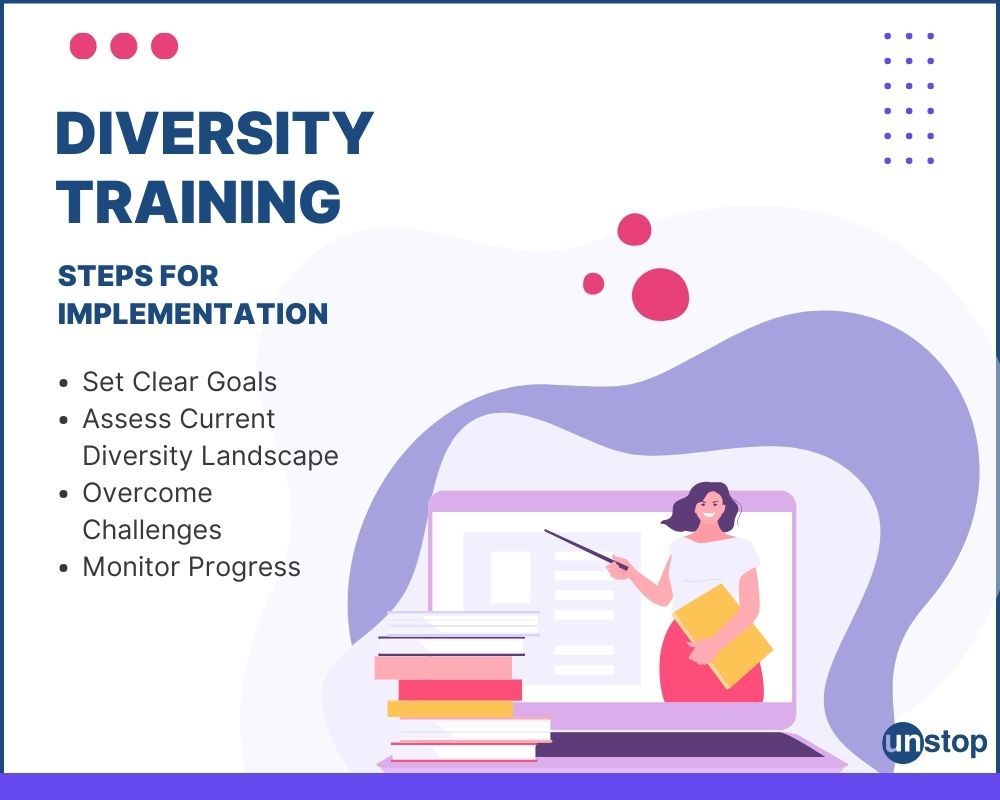
Set Clear Goals
Organizations embarking on diversity initiatives should begin by setting clear and measurable goals. These goals provide a roadmap for the organization, guiding them towards creating a more inclusive work environment. By establishing specific diversity objectives, companies can track their progress effectively.
Assess the Current Diversity Landscape
To kickstart their initiatives, organizations can first conduct a comprehensive assessment of their current diversity landscape. This involves analyzing demographics, representation data, and employee feedback to identify areas that require improvement. By understanding the existing issues within the organization, companies can tailor their diversity goals to address these specific challenges.
Overcome Challenges
One common challenge when starting diversity initiatives is resistance or lack of buy-in from employees. Organizations can overcome this by fostering open communication and providing education on the importance of diversity and inclusion. Encouraging employee engagement through workshops, training sessions, and open forums can help create a more inclusive culture.
Another challenge organizations may face is the lack of resources or expertise to drive diversity initiatives effectively. To tackle this, companies can consider partnering with external consultants or organizations specializing in diversity and inclusion. These partnerships can provide valuable insights, guidance, and support in implementing successful diversity programs.
Monitor Progress
To ensure the success of their diversity initiatives, organizations must continuously monitor and evaluate their progress. Regularly tracking key metrics such as representation, employee satisfaction levels, and participation in diversity programs allows companies to make data-driven decisions and adjust their strategies accordingly.
Best Diversity Training Programs (Real-Life Examples)
Accenture Program: Fostering a culture of equality
Accenture has introduced programs for Gender Equality, Disability Inclusion, LGBTQ+ Community Support, Ethnic and Racial Diversity, and Mental Health & Wellness support. The key aspects of its diversity initiatives are:
- Pay Equity: It’s one of the few organizations, globally, to have pay equity i.e. people are paid the same, irrespective of their gender, race, or ethnicity.
- Inclusive Benefits: Offering healthcare benefits that cover transgender healthcare needs and same-sex partner benefits.
- Unconscious Bias Training: Regular training programs to raise awareness of unconscious bias and promote inclusive behaviors.
Microsoft Program: "Disability Hiring" Initiative
Microsoft's Disability Hiring initiative focuses on creating a workplace accessible and inclusive for employees with disabilities. Key aspects include:
- Accessible Technology: Ensuring all technology and communication tools are accessible for employees with disabilities, including screen readers and captioning for videos.
- Workforce Recruitment and Retention: Proactive recruitment strategies to attract and retain talent with disabilities, along with support programs for interview accommodations and workplace adjustments.
- Accessibility Champions: A network of employees who champion accessibility within their teams and departments.
- Partnerships: Collaborating with organizations that support people with disabilities to create inclusive hiring pipelines and internship opportunities.
Tata Group Program: Diversity and Inclusion (D&I) charter & initiatives
The Tata Group has a comprehensive D&I charter outlining their commitment to creating an inclusive workplace. Some key initiatives include:
- LGBTQ+ Inclusion: Tata Pride, their LGBTQ+ employee resource group, offers a support network and advocates for LGBTQ+ rights within the company. They also extended same-sex partner benefits, demonstrating a progressive stance.
- Women in Leadership: Programs like the "Women Leaders Forum" empower women and support their career development. The Group has also set aspirational targets for increasing women's representation in leadership positions.
- Focus on Disability Inclusion: The Tata Group actively hires people with disabilities and provides workplace accommodations and support programs.
- Mentorship and Sponsorship Programs: Mentorship and sponsorship programs connect diverse employees with experienced leaders, fostering career growth and role models.
Infosys Program: Diversity and Inclusion (D&I) Council & Programs
Infosys has a dedicated D&I Council that oversees various initiatives to promote a diverse and inclusive work environment. Here are some examples:
- Employee Resource Groups (ERGs): Infosys has several ERGs representing diverse backgrounds like iPRIDE for LGBTQIA+ employees and their allies, InfyAbility for employees with disabilities and their allies and Infosys Women’s Inclusivity Network (IWIN) for women and their allies. These groups provide a platform for community building, networking, and professional development.
- Focus on Accessibility: Infosys strives to create a physically and virtually accessible work environment for employees with disabilities. They offer assistive technologies and support services.
- Unconscious Bias Training: Infosys conducts unconscious bias training for all employees to raise awareness and create a more inclusive work environment.
These are just a few examples, and many other companies are implementing innovative DE&I programs.
Improving the Effectiveness of Diversity Training
Two important facets of an effective diversity training program are customization and the role of trainers.
Customization Strategy
Customization is key in designing effective diversity training programs. Tailoring the content to the specific needs and challenges of an organization enhances relevance and engagement. By analyzing the company's demographics, culture, and existing issues, trainers can create bespoke training modules.
Creating interactive sessions, such as case studies or role-playing exercises, based on real-life examples from successful diversity training programs can significantly boost engagement and retention. Incorporating experiential learning activities that simulate diverse workplace scenarios allows participants to apply their knowledge in a practical setting.
Role of Trainers
Trainers play a crucial role in delivering impactful diversity training sessions. Their ability to foster an inclusive environment, encourage open dialogue, and address sensitive topics with empathy and respect is paramount. Skilled facilitators should possess cultural competence, effective communication skills, and a deep understanding of diversity issues.
Engaging guest speakers from diverse backgrounds or inviting employees to share their experiences can provide valuable perspectives and insights during training sessions. This approach not only enriches the learning experience but also promotes a sense of community and understanding among participants.
Tracking and Evaluating the Results of DE&I Training Efforts
Key Metrics
Track progress by analyzing employee feedback, promotions, and retention rates post-training sessions. Utilize surveys to gauge satisfaction and identify areas for improvement.
Assess the impact of training on diversity initiatives through quantitative data such as demographic shifts within leadership roles.
Continuous Improvement
Implement a system for ongoing evaluation to ensure sustainability. Regularly review metrics to adapt training programs based on feedback and performance indicators.
Establish a feedback loop where employees can share their experiences openly, fostering a culture of transparency and accountability.
Addressing Challenges
Identify any barriers hindering the effectiveness of training programs, such as lack of engagement, cultural differences, or unconscious bias. Tailor future sessions to address these specific challenges.
Encourage open communication channels for employees to express concerns or suggestions regarding the training content or delivery methods.
Essential Elements for Successful Diversity Training
Leadership Support
Effective leaders play a crucial role in the success of diversity training programs. They must actively promote and participate in these initiatives to set a positive example for other team members. By demonstrating a commitment to diversity and inclusion, leaders can foster a culture that values differences and encourages open communication.
Communication Skills
Strong communication skills are essential for the successful implementation of diversity training. Clear and effective communication helps ensure that all team members understand the goals and objectives of the program. It also creates an environment where diverse perspectives are welcomed and respected.
Continuous Evaluation
Continuous evaluation is key to the long-term success of diversity training programs. Regularly assessing the effectiveness of training initiatives allows organizations to identify areas for improvement and make necessary adjustments. By collecting data on attitudes, behaviors, and outcomes, organizations can measure the impact of their efforts and make informed decisions moving forward.
Results-Oriented Approach
A results-oriented approach is essential when designing diversity training programs. Setting clear goals and objectives helps organizations track progress and measure the impact of their initiatives. By focusing on tangible outcomes, organizations can demonstrate the value of diversity training to stakeholders.
Closing Thoughts
By aligning diversity with business goals, assessing inclusivity levels, and implementing effective training programs, organizations can pave the way for a more inclusive and successful workplace. It’s important to track and evaluate diversity training efforts to ensure continuous improvement and impactful results.
Diversity training should be embraced as a tool for growth, fostering a culture of respect, understanding, and collaboration within an organization.
Frequently Asked Questions
1. What is the significance of diversity training in the workplace?
Diversity training in the workplace is crucial for fostering an inclusive environment, promoting understanding among employees, enhancing teamwork, reducing biases, and improving overall productivity.
2. How can companies assess the effectiveness of their diversity training programs?
Companies can evaluate the impact of diversity training by conducting surveys to gather feedback from employees, tracking changes in workplace dynamics and behaviors, monitoring diversity metrics, and analyzing performance data post-training.
3. What are some common types of diversity training methods used by organizations?
Organizations commonly utilize methods such as workshops, role-playing exercises, case studies, interactive online modules, unconscious bias training, cultural competency training, and mentoring programs to deliver effective diversity training.
4. How can businesses align diversity initiatives with their overarching business goals?
Businesses can align diversity initiatives with their goals by integrating diversity metrics into performance evaluations, setting clear diversity objectives tied to business outcomes, fostering diverse leadership representation, and creating a culture that values inclusivity at all levels.
5. Why is it essential for companies to track and evaluate the results of their DE&I training efforts?
Tracking and evaluating DE&I training results allow companies to measure progress towards diversity goals, identify areas for improvement, demonstrate commitment to inclusivity internally and externally, and ensure accountability for diversity initiatives' success.
If you liked this, you might also be interested in the following:
- Diversity Hiring & Building An Inclusive & Equitable Workforce
- Difference Between Talent Acquisition And Recruitment: 5 Key Distinctions
- Changing Role Of HR: From Administrative To Strategic
- Learning And Development: Definition, Importance & Latest Strategies
- Career Development in HRM: Benefits And Effective Strategies
I’m a reader first and a writer second, constantly diving into the world of content. If I’m not writing or reading, I like watching movies and dreaming of a life by the beach.
Login to continue reading
And access exclusive content, personalized recommendations, and career-boosting opportunities.
Subscribe
to our newsletter
Blogs you need to hog!
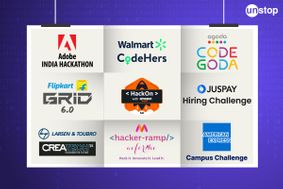
Organize Hackathons: The Ultimate Playbook With Past Case Studies

What is Campus Recruitment? How To Tap The Untapped Talent?

Lateral Hiring: A Complete Guide To The Process, Its Benefits, Challenges & Best Practices
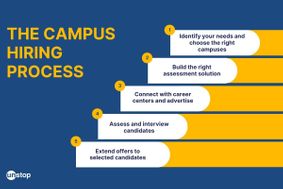








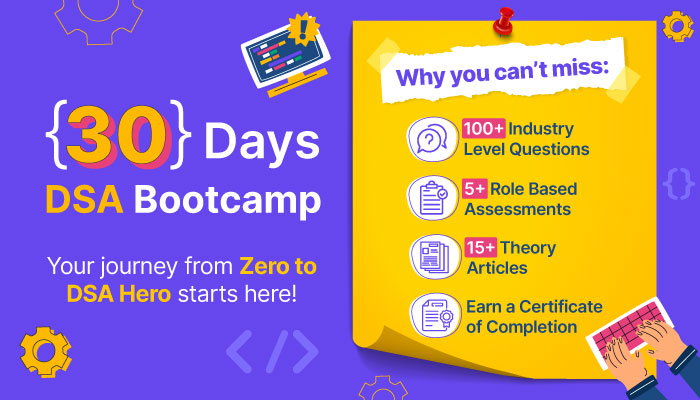



Comments
Add comment